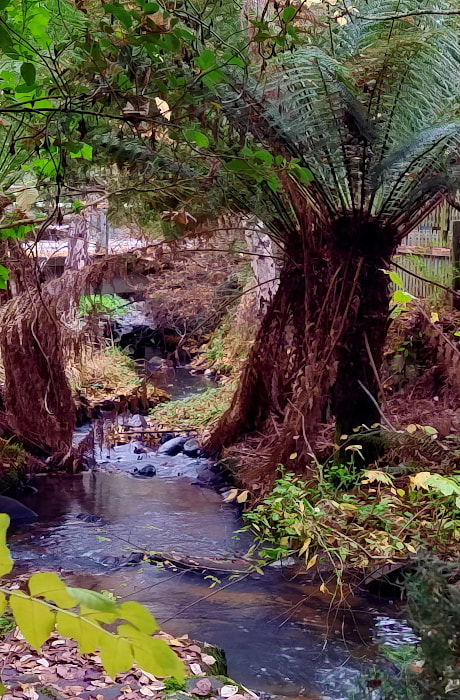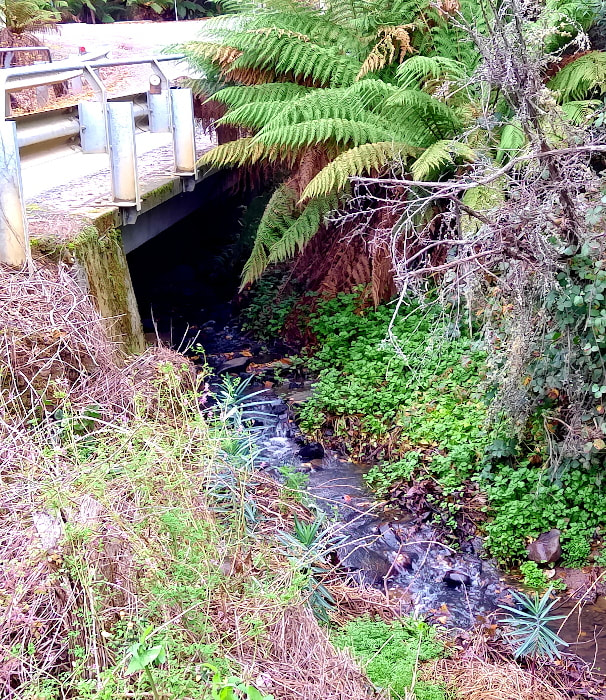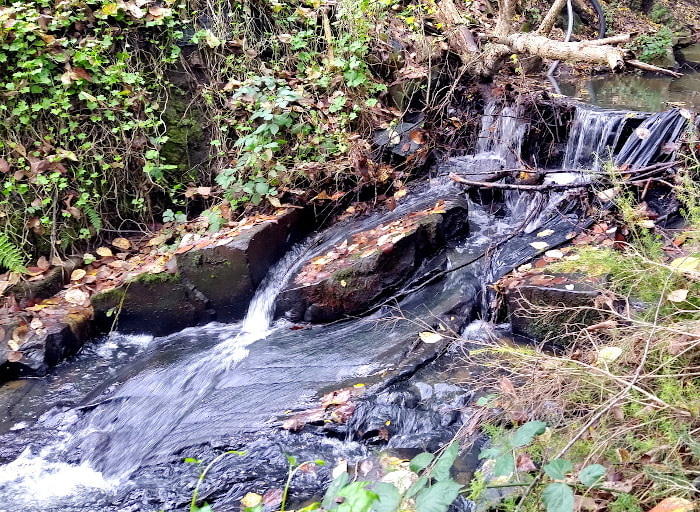History of Price’s Creek by John Young
“A trip to Franklin was the highlight of our existence. It was a big bustling town ... with branches of all the big Hobart stores … Friday night shopping was a marvellous treat. It was a blaze of light.” [1]
These are the words of Huonville resident, Jim Skinner in the mid 1980s, recalling the Franklin of his youth around 1916. The “blaze of light” was the product of a small hydro-electric plant on Price’s Creek, an initiative of local government. This hydro scheme was designed by Mr. G.H. Crofts, using Price's Creek to provide domestic and street lighting for Franklin. In 1929 the Hydro Electric Commission which monopolised Tasmania’s electricity supply from then onwards, took over and the first period of fame for Price's Creek ended.
The Creek was part of a 1,280 acre purchase by John Giles Price in 1836. Price was the first person to purchase and settle on land in this locality on the western side of the Huon River. Price was a man of “haughty and authoritarian temperament” who “valued the efficiency and predictability of a totalitarian system above the intangible benefits of a free society.” [2] He later became notorious as the Muster Master of convicts in Hobart and for his inhumane treatment of convicts when he was Commandant on Norfolk Island between 1846 and 1853. In 1857, convicts murdered Price in Victoria.
While in Franklin, Price befriended liberal-minded Lieutenant Governor Sir John Franklin. His wife, Jane, Lady Franklin, purchased Price’s land and subdivided the area that was to grow into the town of Franklin. Price moved to Hobart Town and in 1838 married Sir John Franklin's niece and ward, Mary.
In 1929, as road replaced river transport, Franklin’s commercial, civic and sporting life declined. The Creek became choked with weeds and Crack Willow. Water samples in the mid-1990s showed that Price's Creek was severely polluted.
In 1998, local government proposed removing the Creek’s three wooden bridges behind Franklin School, and straightening the last 100 metres, confining it within a concrete culvert. The Creek was a favourite playground and outdoor classroom, so the students and local community petitioned Council requesting that the natural flow of the Creek and the delightful precinct it created be preserved. Council agreed and the Parents and Friends Association formed a Landcare group, supported by Council, to restore the lower reaches to a healthy condition and plant the banks with endemic species.
Forestry Tasmania removed the willows and taught the students of Franklin School how to monitor water quality. Council’s Healthy Rivers project set about the task of removing the causes of pollution.
In 1999, a rare platypus was sighted in the Creek, attesting to the Creek’s ecological recovery. In 2002 the Franklin Streetscape Reference Group resolved to re-establish rain forest at the Creek mouth, but there is a huge task to be done upstream if the restoration of this powerful little creek is to be completed.
[1] Watson, Catherine, Full and Plenty, An Oral History of Apple Growing in the Huon Valley, Twelvetrees Publishing Co., Sandy Bay, 1987, pp. 36-37.
[2] J.V. Barry, The Life and Death of John Giles Price: a study in the exercise of naked power, M.U.P. 1964, p.9
[2] J.V. Barry, The Life and Death of John Giles Price: a study in the exercise of naked power, M.U.P. 1964, p.9


